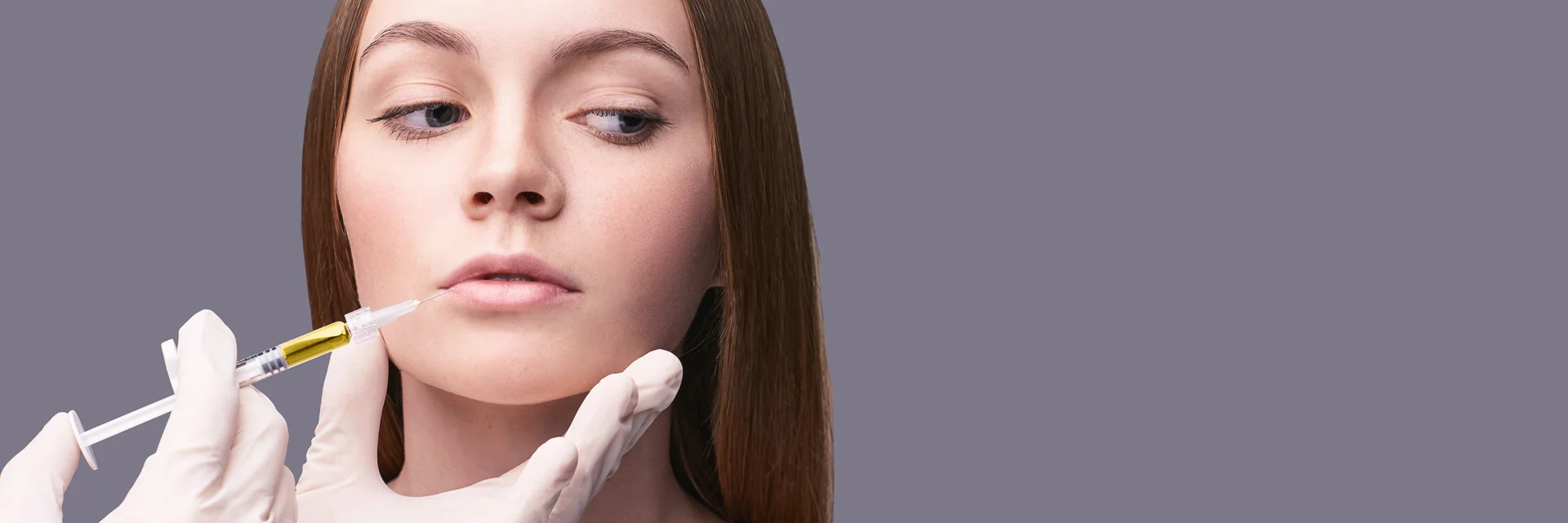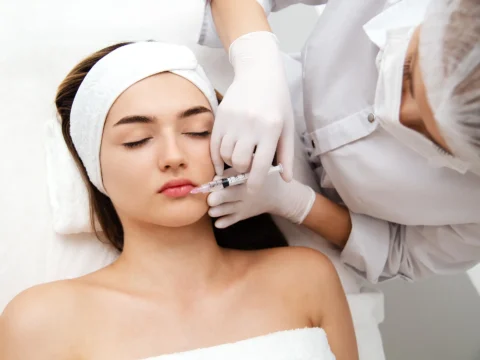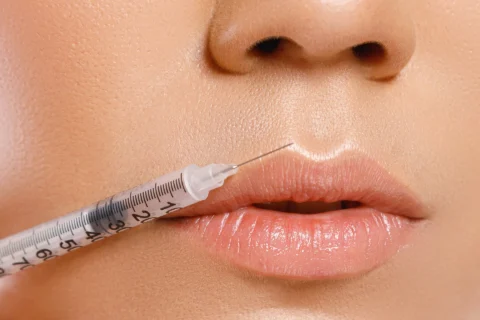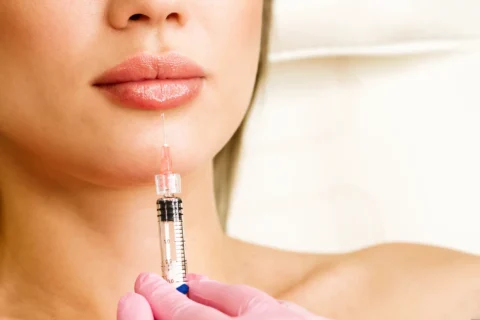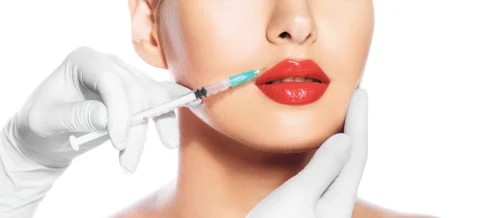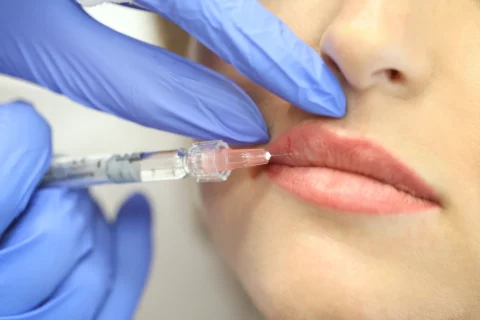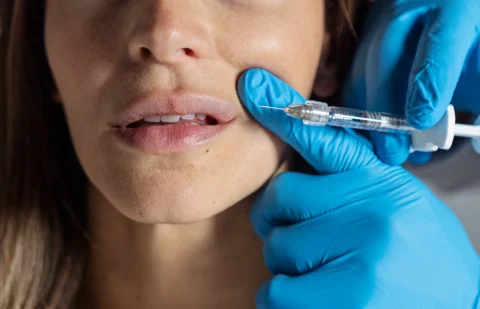Unraveling White Blanching After Lip Fillers: Causes, Consequences, and Care
You know, when it comes to lip fillers, there’s more than meets the eye. White blanching is one of those behind-the-scenes terms that can pop up post-treatment.
While it might sound a bit technical, think of it as a sign your body gives when something might be off after getting those lip enhancements. Don’t stress! We’re going to dive deep into what it means and why it matters in the next sections.
Knowledge, after all, is power—even when it comes to aesthetics.
Understanding White Blanching
White Blanching refers to instances where the skin looks noticeably paler or whiter than its surrounding area often due to reduced blood flow.
This change in color typically indicates a diminished blood flow to that specific section of the skin, often causing it to feel cool upon touch.
Not to be confused with skin-lightening procedures, which aim to reduce skin melanin, blanching is a physiological response often triggered by external factors.
Diagnosing Blanching
If you suspect blanching, a healthcare expert will typically carry out a thorough physical examination. They’ll look at the skin’s area in question and run through your medical history to decipher potential causes.
Blanching Rash vs. Non-Blanching Rash
An interesting thing to note is the behavior of a blanching rash upon applying pressure. It turns white or fades. On the flip side, a non-blanching rash remains unchanged even with pressure. This persistent color is due to subdermal bleeding.
Blanching vs. Post-Procedure Swelling
Following medical or cosmetic procedures, swelling is a relatively expected side effect. This is an inflammation or fluid buildup reaction by the body’s tissues. However, it’s vital to differentiate between this typical swelling and blanching. While swelling points towards inflammation or fluid congestion, blanching signifies reduced blood flow, giving the skin its pale look.
Blanching vs. Non-Pitting Edema
Another condition that might resemble blanching is non-pitting edema. Despite appearing somewhat alike, their underlying causes differ. Non-pitting edema comes from fluid accumulation in tissues, contrasting with the reduced blood flow characteristics of blanching.
Causes of White Blanching After Lip Filler Procedure
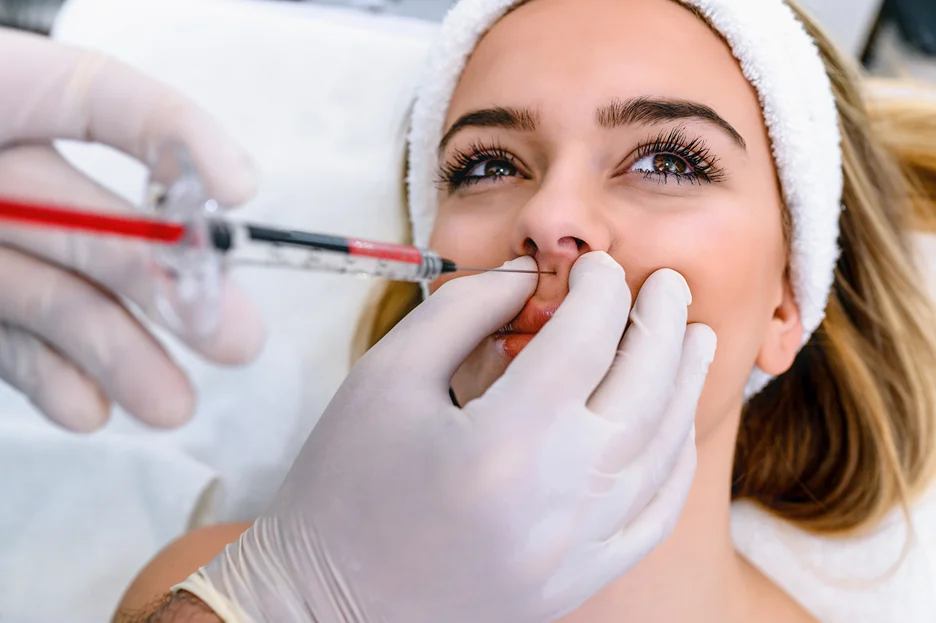
After getting lip fillers, the appearance of white blanching might be alarming.
This rare occurrence, happening in roughly 1 in 1000 individuals, is a sign of a procedure complication. The lips take on a pale hue due to disrupted blood flow, often accompanied by severe pain. More technically, blanching signals a possible vascular occlusion.
In such cases, the filler might be obstructing an artery, jeopardizing the blood flow and potentially leading to tissue death. The onset of white blanching necessitates prompt medical intervention, as it signifies an underlying circulation issue.
Let’s address the potential causes of white blanching, the risks tied to it, and the necessary preventive measures.
Vascular Occlusion
When the filler finds its way to a blood vessel, it could block it, inhibiting blood flow to the lips. Causes for such occlusion could range from filler placement errors to going too deep during the injection.
Sympathetic Vasospasm
The procedure can cause stress for some individuals. In response, the body might release stress hormones leading to the temporary narrowing of blood vessels, especially in those anxious about the treatment.
Additional Causes to Consider:
- Allergic Responses: Though uncommon, the dermal filler material might not agree with everyone, leading to allergic reactions.
- Infection: A stringent adherence to cleanliness during the procedure is paramount. Neglect could pave the way for infections.
- Overcorrection: Too much of anything isn’t good. Overfilling can strain the blood vessels, leading to blanching.
- Injection Techniques Matter: A skilled injector is crucial. Improper techniques can harm blood vessels, resulting in the noted paleness.
If white blanching becomes a concern post-treatment, it’s vital to promptly seek an evaluation from the administering injector.
Signs of Vascular Occlusion
Initial Symptoms and Identification
After getting lip fillers, you may anticipate some swelling or discomfort. However, certain symptoms can signal something more pressing: vascular occlusion. Within 24 hours post-treatment, be vigilant for:
- Disproportionate Pain: Experiencing intense pain that surpasses typical post-filler discomfort.
- Skin Color Alterations: Spots that appear red to blueish-purple or even white, hinting at a reduced oxygen and blood supply to the skin.
- Excessive Swelling or Bruising: Observing swelling or bruising that seems more than what’s customary after lip fillers.
Advanced Symptoms
Should vascular occlusion persist without intervention, the progression can manifest more concerning signs:
- Skin Necrosis: About 2-3 days after the procedure, the skin might turn black, indicating skin death due to hindered blood flow.
- Blindness: A grave consequence if vascular occlusion remains unchecked. This results from high-pressure injections into specific facial arteries.
Diagnosis and Action Steps
Detecting vascular occlusion is largely a hands-on process. Healthcare professionals will assess the capillary refill time in the lips, checking their color, temperature, and firmness. Spotting and addressing it early can make all the difference. If any signs arise post-lip filler treatment, it’s imperative to promptly reach out to a healthcare provider.
Prioritizing Safety: Blanching Prevention and Immediate Care After Cosmetic Injections
Choosing the Right Hands
Ensuring your cosmetic procedure is safe and effective begins with a pivotal decision: selecting the right injector. Qualified and seasoned practitioners possess:
- Proficient Knowledge: A comprehensive understanding of facial anatomy and distinct filler characteristics.
- Prompt Intervention: The capability to swiftly identify and manage complications.
Opting for Cannulas Over Needles
A potential method to mitigate risks:
- Cannulas’ Advantage: These blunt-tipped tools might pose a lower risk of piercing blood vessels when compared to needles. This can minimize the chances of vascular occlusion.
- Informed Decision: The selection between cannulas and needles often hinges on the procedure’s specifics and the practitioner’s expertise.
Immediate Response to Suspected Blanching
In case you observe potential blanching post-injection, take these pivotal steps:
- Gentle Massaging: A subtle massage can aid in redistributing the dermal filler, potentially reinstating the blood flow.
- Utilizing Vasodilators: Encouraging the blood vessels to expand improves blood circulation. Employing agents like nitroglycerin can serve as effective vasodilators in such situations.
- Neutralizing with Hyaluronidase: Upon detecting any signs of white blanching, hyaluronidase, an enzyme that counters the effects of hyaluronic acid, should be promptly administered. Its introduction can help dissolve hyaluronic acid introduced during the filler process, ensuring the restoration of normal blood circulation.
- Hyperbaric Oxygen Treatment: For cases involving extensive vascular occlusion affecting a significant amount of tissue, hyperbaric oxygen serves as a specialized intervention to address the complication.
Should you detect blanching or other complications, don’t delay in seeking medical assistance. Prompt action can curtail complications, ensuring optimal outcomes.
Revitalize Your Smile with Ethos Spa: Expertise in Safe Lip Fillers & White Blanching Solutions
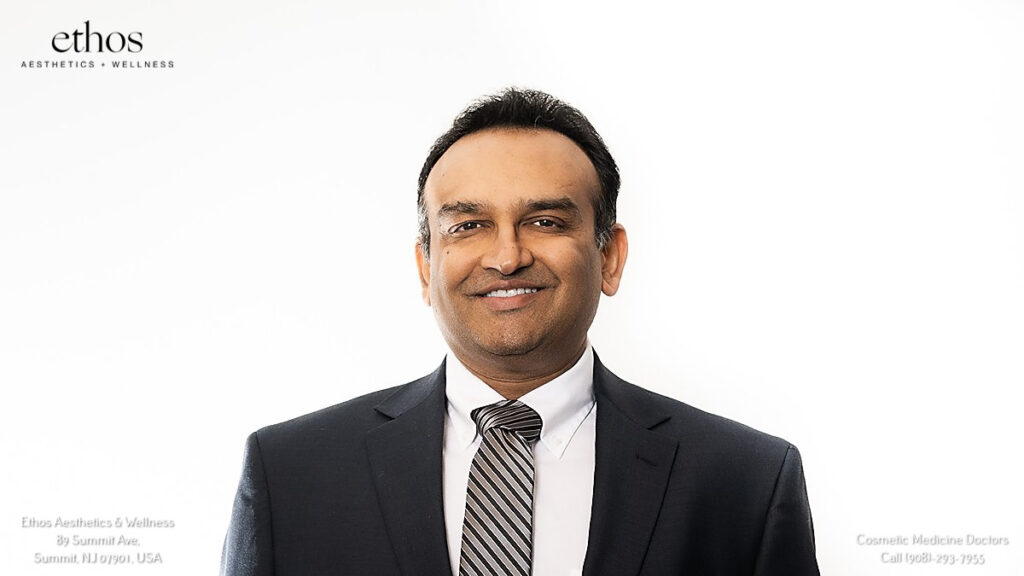
At Ethos Spa, our commitment is to unveil your best self with natural results. Every lip filler procedure we undertake is backed by years of expertise and a deep understanding of facial anatomy.
If you’ve experienced complications like white blanching from previous treatments elsewhere, our team is equipped and ready to provide expert solutions. Your beauty journey deserves the utmost precision and care. Why settle for less?
Discover beauty with confidence. Trust Ethos Spa for safe lip fillers and specialized care for white blanching. Schedule your consultation today!

